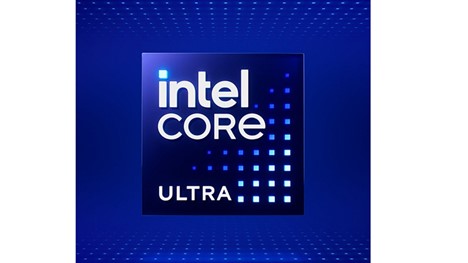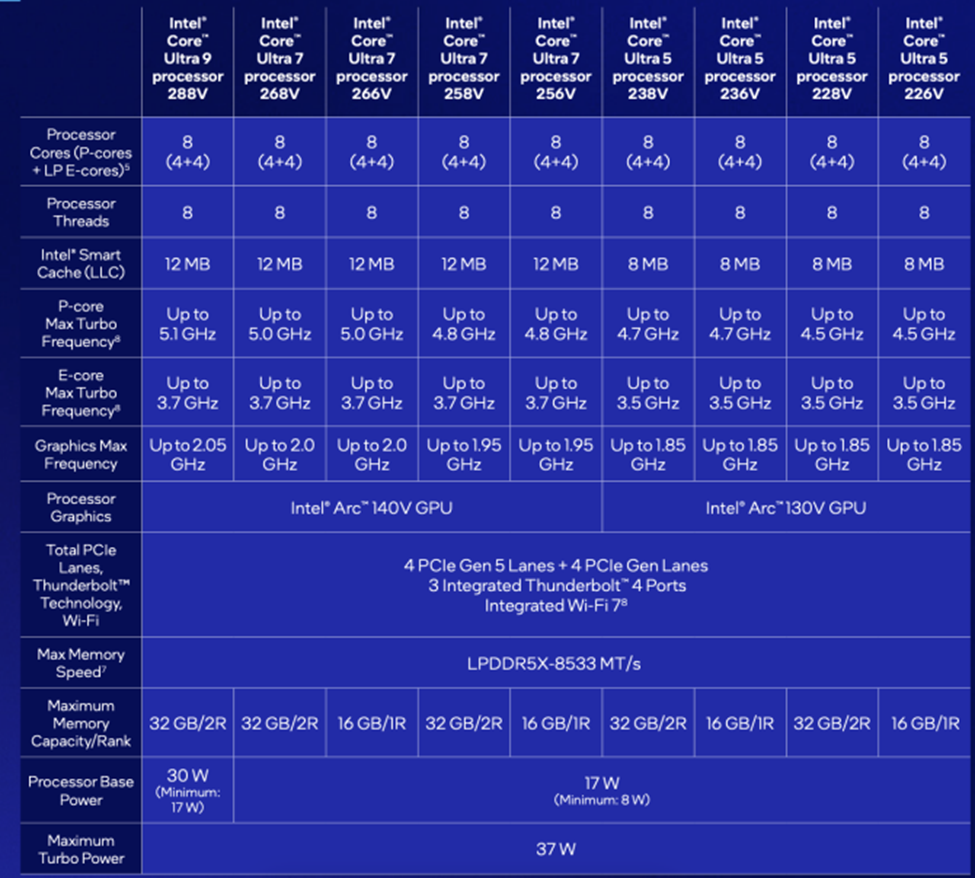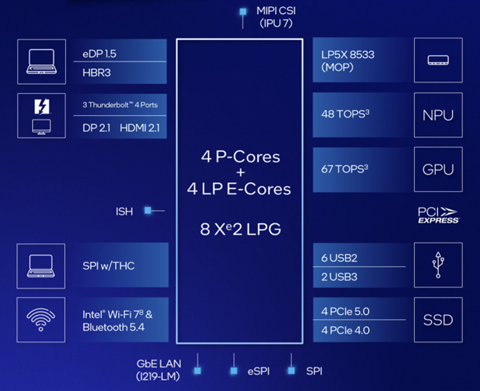The Intel Core Ultra 200V series, code-named Lunar Lake, represents Intel’s late entry into the AI PC market, following competitors like Qualcomm and AMD. Despite Intel’s earlier efforts in promoting AI PCs, consumer awareness remains low, with most associating AI PCs only with Microsoft’s Copilot+ feature. Lunar Lake is praised for its efficiency, featuring a strong iGPU, a TPU, and a blend of performance and energy-efficient cores. The processors come in nine different SKUs, with TDPs ranging from 8W to 17W, and a flagship model at 30W. The integrated GPU uses Intel’s Xe2 architecture, and the chips support modern connectivity options like Wi-Fi 7 and Thunderbolt 4. Preorders have begun, with shipping starting on September 24.

In the good old days, the industry was timed and led by Intel announcements and releases. Now, Intel has to use a stupid German consumer show to launch its fabulous new CPU. Dylan was right, the times have changed.
Lunar Lake is a masterpiece. It runs forever, it’s got a great iGPU and a pretty good TPU and NPU, and a lot of cores—some for performance and some for just getting by on a few joules. But, based on its name, it needs 200 volts to operate—that can’t be right, can it?
Intel Core Ultra 200V-series processors, code-named Lunar Lake, is Intel’s late entry into the AI PC marketing buzz, after Qualcomm and AMD, even though Intel was the first pusher of the AI PC naming.
But since it’s still early days and the only thing a few consumers know about an AI PC is that it runs something Microsoft dreamed up called Copilot+, no one is spraining their ankles running to the local computer shop to get one.
When they do decide it’s time to turn in their 7-pound, half-hour notebook, they’ll buy a slick 2-pound, 15- to 20-hour Lunar Lake-based thin and light PC with USB-C holes in it, forcing them to buy new cables—the price of advancement.
Intel is offering nine versions of the new processor, so there won’t be much scrap coming out of the fab.

The basic layout of the new chip—an SoC in all rights, given that it has three different types of processors in it—is pretty conventional but impressive nonetheless.

Intel first unveiled Lunar Lake in May at Computex, giving us a detailed look at its architecture and specifics about its GPU, NPU, and overall design. Now, it has announced the remaining details, including the CPU SKUs, efficiency numbers, and performance claims.
The Core Ultra 200V series consists of nine different SKUs, with four single-threaded Lion Cove P-cores and four single-threaded Skymont E-cores with different clock speeds for each model. The chips feature TDPs ranging from 8W to 17W for the bulk of the stack, with the flagship Core Ultra 9 288V being a lone 30W TDP model.
Intel’s Arc 100V-series integrated GPU engines come with the Xe2 architecture and either seven or eight Xe2 cores/ray-tracing units operating at peak frequencies ranging from 1.85 GHz to 2.05 GHz. The chips also support up to six USB 2 and two USB 3 ports, along with integrated Wi-Fi 7-Thunderbolt 4, Bluetooth 5.4, and LE audio.
The company said Lunar Lake preorders start today, and units start shipping on September 24.
Intel has revealed that Acer, Asus, Dell Technologies, HP, Lenovo, LG, MSI, and Samsung will launch AI PCs powered by Intel Core Ultra 200V processors.